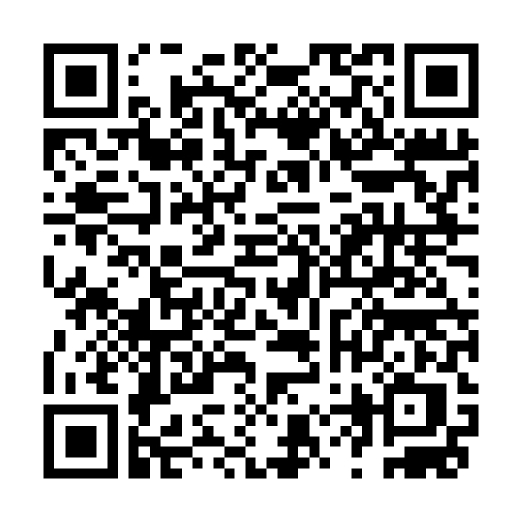2D barcode (two-dimensional barcode)
What is a 2D barcode?
A 2D (two-dimensional) barcode is a graphical image that stores information horizontally as one-dimensional barcodes do, as well as vertically. As a result, the storage capacity for 2D barcodes is much higher than 1D codes. A single 2D barcode can store up to 7,089 characters instead of the 20-character capacity of a 1D barcode. Quick response (QR) codes, which enable fast data access, are a type of 2D barcode.
Android and iOS smartphones use 2D barcodes in their built-in barcode scanners. The user photographs a 2D barcode with their smartphone camera, and the built-in reader interprets the encoded URL, leading the user directly to the relevant website.
1D vs. 2D barcode scanning
From appearances alone, 1D and 2D barcodes look very different. One-dimensional barcodes consist of black and white lines reminiscent of a zebra print. Two-dimensional barcodes have black and white dots and shapes that create specific patterns.
However, the main difference between these two types of barcodes is the kind of barcode scanner needed to read them.
Traditional 1D barcodes, also known as linear barcodes, often use laser or charge-coupled device (CCD) scanners. Newer 2D barcodes often use imaging scanners for data capture.
In addition, 1D and 2D codes have different uses. One-dimensional barcodes are typically used when the encoded data may change more than once, such as prices or product content. Meanwhile, 2D barcodes are used in various situations, such as:
- when a network connection isn't available
- when a large amount of data is needed
- when a built-in error correction is necessary
Most industries use a combination of the two. For instance, shipping companies typically use at least five different types of barcodes on a single box. In the tech manufacturing industry, even something as small as a circuit board has an identifying barcode.
Types of 2D barcodes
Intermec Corporation created the first 2D barcode, called Code 49, in 1988. Today, there are many different types of 2D barcodes and barcode systems. The International Organization for Standardization (ISO) governs all of them to ensure standardized quality and efficiency.
Here are some of the most common 2D barcode types.
QR code
QR codes are matrix barcodes that can contain various data types, such as alphanumeric and binary data. This type of barcode technology is one of the most widely used today, especially by mobile devices.
QR codes have enough capacity for 1,817 Chinese characters, 4,296 Latin letters or 7,089 numbers. They also have four error correction levels, which means that even if a QR code is damaged, it can often still be read correctly.

Aztec code
Aztec barcodes look like QR codes with a finder icon in the middle. This icon is uniquely generated for each code, and it helps the barcode scanner decode the surrounding squares. Compared to QR codes, Aztec codes are more space-efficient and resilient.
These codes are still readable even with poor resolution and clarity, making this type of barcode technology ideal in scenarios where there is limited space, such as in small items and corners, and when there is a problem with the scanner. Government documents and tickets such as boarding passes often use Aztec codes.
Data matrix
A data matrix is a type of 2D barcode that features uniquely generated patterns of square modules. This barcode type can store about 2,000 characters, including alphanumeric characters, GS1 data and even binary data. Data matrix codes are still readable even if they are 60% damaged, which is why the electronic, automotive, health and even document storage industries use them.
PDF417
PDF417 is a 2D barcode that can store various binary data, including alphanumeric and special characters. It can also store images, signatures and fingerprints. As a result, identity verification, inventory management and transportation services often use them. The PDF part of its name comes from the term "portable document file." The "417" part refers to its four bars and spaces arranged inside each pattern, consisting of 17 characters.
MaxiCode
MaxiCode is the unique barcode that United Parcel Service (UPS) developed and uses. The barcode consists of hexagons with concentric circles in the middle.
The sole purpose of a MaxiCode is to help couriers track packages and manage shipments. It can contain invoice numbers, customer references, tracking numbers, purchase order numbers and carrier identification.
GS1 Composite code
A GS1 Composite code consists of two components -- one at the top and another at the bottom. The bottom component contains the primary data, such as the item identification number, while the top contains secondary data, such as batch codes or expiration dates. Grocery stores use GS1 Composite codes on fresh produce, for example.
2D Barcode uses
2D barcodes have a variety of uses in different industries, from government processes to postal delivery to factory work.
Here are a few examples of 2D barcode uses:
- Nike included 2D barcodes on their posters positioned along the route of a sports competition. When spectators scanned the codes with their mobile phones, it gave them access to Nike's sponsored content.
- Newspapers add 2D barcodes to developing stories so that mobile users can stay updated on their smartphones.
- Stores print 2D barcodes on their product packaging to link to product reviews.
- Bloggers and content creators use 2D barcodes to promote their blogs or social media
Benefits of 2D barcodes
Some of the main benefits of 2D barcodes are:
- Access to complete information. A single 2D barcode can deliver a wealth of knowledge in a small package. For example, 2D barcodes make it easier for healthcare workers to provide the proper care because they can access detailed patient records conveniently.
- Inventory management. Two-dimensional barcodes can hold plenty of information, which means companies can use them to keep track of identification markers, product categories, date and time, for example. This use allows companies to streamline their supply chains, making logistics more efficient.
- Marketing strategies. Organizations can attach 2D barcodes to products to provide additional information when scanned. Two-dimensional barcodes can useful for mobile marketing because people can access the data, regardless of internet access. Companies can also use these barcodes in business cards and social media campaigns to promote businesses and gain more customers.
Learn how the pandemic spurred QR code app upgrade at PayPal and how the uptake in contactless technologies places demands on the data center. Also see, smart label, RFID, RFID tagging and Bar Coded Medication Administration.








